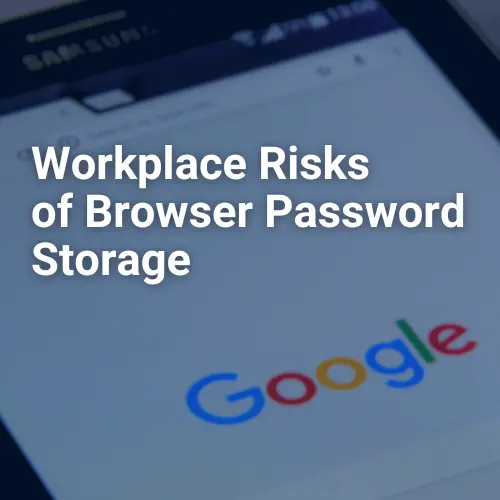Cybersecurity threats are many, from employee error and natural disasters to the increasing complexity of cyber attacks. These challenges are likely to grow with time, according to Security Intelligence, which projects data breaches will continue to occur more frequently into the next decade.
Even if your business follows the best cybersecurity practices, there is always a chance of a disaster, so it’s best to be prepared. The good news is you can mitigate the effects of disasters with a well-defined approach that starts with a disaster recovery policy and a corresponding plan. Learn how these two components help increase your organization’s chances of successful disaster recovery.
What Is Disaster Recovery (DR)?
Disaster recovery (DR) refers to a company’s means of regaining access to and restoring its IT infrastructure following an incident. DR is often classified under business continuity, which involves the ability of an organization to continue operations during incidents while recovery efforts take place.
Despite its name, disaster recovery accounts for many circumstances beyond natural disasters like fire and flood, including:
- Cyber attacks (social engineering, malware, ransomware)
- Technological malfunctions (power outages, transportation issues)
- Hardware or system failure
- Human error
- Public health crises (COVID-19 pandemic)
Why Does Disaster Recovery Matter?
As a general rule, it is good practice to have a disaster recovery plan in place to ensure operations can be restored, data can be preserved, and downtime can be minimized in the event of a disaster. The more rapid the return to normal operations, the lesser the negative impact on revenue, restoration costs, company reputation, legal matters, and other central business factors.
Additionally, the rise in cloud computing is accelerating the need for disaster recovery. Cloud computing has enabled companies to experience more innovation and growth, and Business Insider finds that by 2025, 85% of enterprises will employ a cloud-first principle.
The challenge with cloud environments is that they make infrastructure more complex, potentially compounding cybersecurity risk. Businesses have more resources to account for in different cloud-based locations, so devising an approach to recovery beforehand can empower a company to act quickly and get back to work with less disruption. Quick recovery helps avoid unnecessary data loss and minimize recovery costs.
What Is a Disaster Recovery Plan?
A strong DR plan will lay out strategies to ensure you can recover rapidly, resume business regardless of the size of the interruption, and limit the impact on operations. It will also outline the communications strategy and procedural items to allow the DR process to flow smoothly. While steps may vary depending on your industry and the specific concerns of your organization, IBM has developed a template for a basic recovery plan. It includes:
- Primary goals: Describe the overarching objectives of the plan
- Personnel: Indicate the employees involved in the data processing
- Application profile: List applications, categorizing them as critical and fixed assets if appropriate
- Inventory profile: Note attributes of items, including cost, manufacturer, serial number, and whether or not they are owned or leased
- Information services backup procedures: Detail when information services data backups are necessary and the proper protocols
- Disaster recovery procedures: Include procedures for emergency response, backup operations, and recovery actions
- Mobile site plan: Discuss how to plan recovery at a mobile site
- Hot site plan: Provide a plan for an alternate site to conduct tasks during home site restoration
- System restore: Explain the procedures for restoring the entire system to its pre-disaster state
- Rebuilding process: Evaluate the damage before reconstructing the data center (management team)
- Testing recovery plan: Assess the plan regularly to make changes for new developments
- Disaster site rebuilding: Provide information on the architecture and materials needed to rebuild the site
- Record of plan changes: Allows for continual updating, so the plan stays current
Benefits of DR Planning
Disaster recovery is key to helping businesses stay resilient in the face of significant events like cyber attacks, natural disasters, and technological malfunction. It aids in the rapid restoration of mission-critical systems, thus reducing costs and other impacts that can have significant effects long term. DR planning also provides an opportunity to train employees how to respond to emergencies, specifically the steps needed to restore normal business operations.
So Then, What Is a Disaster Recovery Policy?
A disaster recovery policy helps your organization identify the need for a DR plan from a top-level governance standpoint and the main components the plan should include. DR policies may look different depending on the needs of your organization, but most have these three items:
- Organizational Need: Defining why a DR plan is needed and any compliance or regulatory requirements driving it.
- Scope: Defining the overall scope for the DR plan without getting too specific on the details (that’s what the plan is for).
- Review Process: Outlining a process by which the plan is reviewed on a scheduled basis and revised as needed to accommodate changes to anything that could impact the plan.
Difference Between DR Plans and DR Policies
In short, the main difference between the two is that policies sit at the governance level, often in policy manuals, and define the need, scope, and review process (minimally) for having a disaster recovery plan. In contrast, the DR plan is the document that explains, in granular detail, the steps needed to respond after an event occurs.
Strengthen Your IT Disaster Recovery with M.A. Polce
With the right plan and policy, your business can enhance IT disaster recovery and experience less interruption and stress. If you need help figuring out where to begin with DR, let M.A. Polce assist. As a managed service provider (MSP) and managed security services provider (MSSP), we offer high-quality, cost-effective cybersecurity services and IT solutions across multiple disciplines. Contact us today to learn more about our services for small to medium-sized businesses and organizations.
Sources:
https://cloud.google.com/learn/what-is-disaster-recovery
https://www.vmware.com/topics/glossary/content/disaster-recovery.html
https://www.ibm.com/uk-en/services/business-continuity/disaster-recovery-plan
https://www.cnbc.com/2023/01/07/phishing-attacks-are-increasing-and-getting-more-sophisticated.html
https://securityintelligence.com/articles/future-of-cybersecurity-2031/
https://www.businessinsider.com/cloud-technology-trend-software-enterprise-2021-2
https://www.ibm.com/docs/en/i/7.3?topic=system-example-disaster-recovery-plan
 M.A. Polce partners with Cisco, the global technology giant, to deliver cutting-edge IT and cybersecurity solutions. Their collaboration offers businesses of all sizes access to Cisco’s advanced networking and security technologies, ensuring fortified digital landscapes against emerging threats. M.A. Polce’s certified experts work closely with clients to design bespoke Cisco-based solutions, optimizing efficiency and safeguarding critical data. Together, they provide unparalleled service and support, empowering organizations to thrive securely in today’s interconnected world.
M.A. Polce partners with Cisco, the global technology giant, to deliver cutting-edge IT and cybersecurity solutions. Their collaboration offers businesses of all sizes access to Cisco’s advanced networking and security technologies, ensuring fortified digital landscapes against emerging threats. M.A. Polce’s certified experts work closely with clients to design bespoke Cisco-based solutions, optimizing efficiency and safeguarding critical data. Together, they provide unparalleled service and support, empowering organizations to thrive securely in today’s interconnected world.




